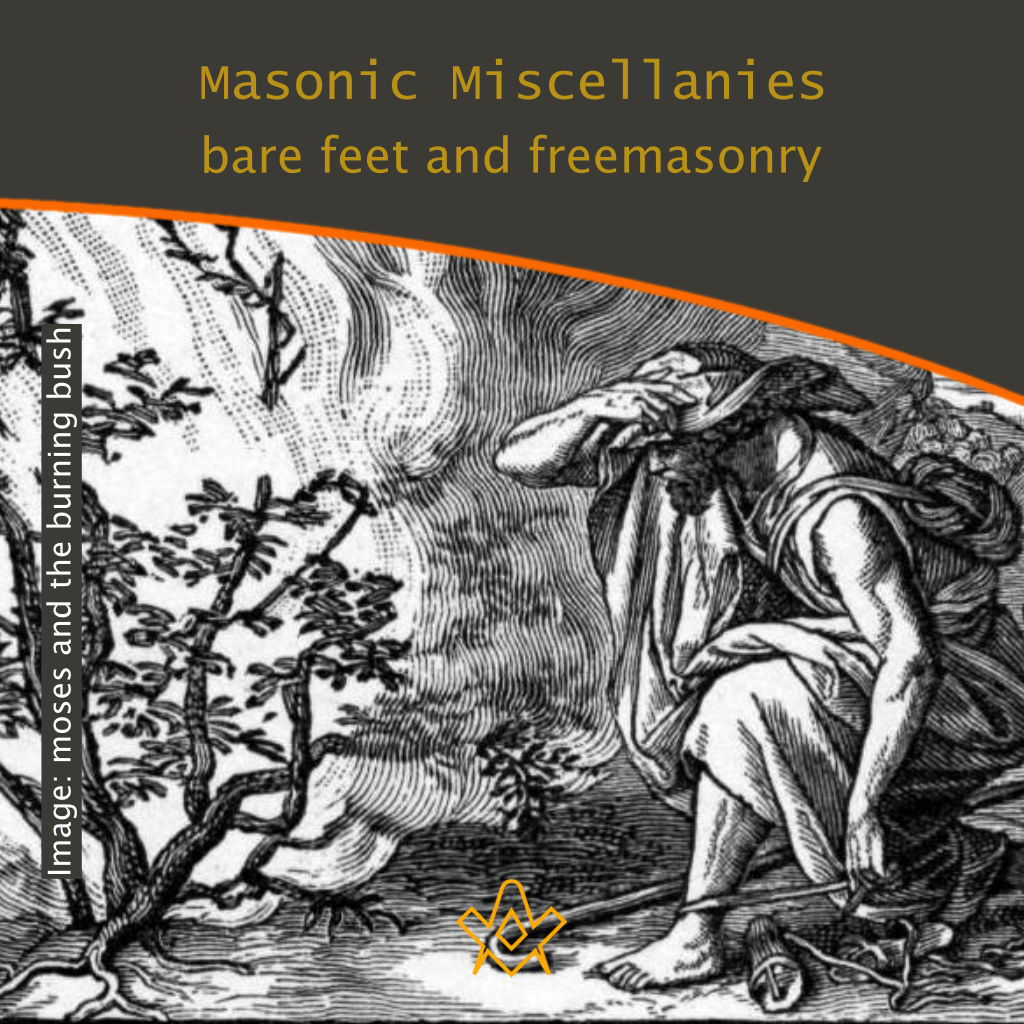Why are we ‘slipshod’ or “bare-footed” in Masonic Ritual?
The First Degree of the Entered Apprentice
A candidate for initiation into a Masonic Lodge often finds the requirements which he/she must fulfil somewhat odd.
The mode of preparation often remains a puzzle, since the ritualistic explanation is not offered in full. So when required to wear an ill-fitting shoe, along with the other intriguing items, it is a bit bewildering.
The ‘slipshod’ or ‘slipper’, is a flat, ill-fitting mule-type shoe placed on the right foot of the Candidate.
The dictionary definition of “slipshod”:
1. characterized by a lack of care, thought, or organization.
2. ARCHAIC (of shoes) worn down at the heel.
The first definition is not really relevant; the second ‘archaic’ meaning describes the object but not the reason for wearing it within a Masonic ritual.
To be improperly or incompletely shod is deliberate. Not only does it physically unbalance the Candidate (sensory deprivation) but it also has a very important symbolic meaning.
The removal of a shoe is an ancient and accepted method of entering into a solemn and legal agreement.
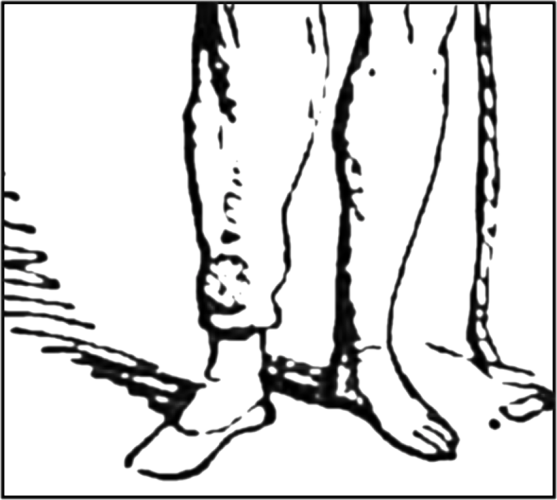
Duncan’s Mason Ritual and Monitor [1866]
IMAGE LINKED: wikimedia Attribution 4.0 International (CC BY 4.0)
In Duncan’s Masonic Ritual it states:
Q. Why were you neither barefoot nor shod?
A. It was in conformity to an ancient Israelitish custom: we read in the book of Ruth, that it was their manner of changing and redeeming; and to confirm all things, a Mason plucked off his shoe and gave it to his neighbor, and that was testimony in Israel.
This then we do in confirmation of a token, and as a pledge of our fidelity; thereby signifying that we will renounce our own will in all things, and become obedient to the laws of our ancient institution.
The passage from the Book of Ruth 4:7 [KJB] reads:
“Now this was the manner in former times in Israel concerning redeeming and concerning changing, for to confirm all things, a man plucked off his shoe and gave it to his neighbour, and that was a testimony in Israel.”
The BSB makes it slightly more understandable:
“Now in former times in Israel, concerning the redemption or exchange of property, to make any matter legally binding a man would remove his sandal and give it to the other party, and this was a confirmation in Israel.”
In Operative Mason’s lodges there was a custom of requiring a newly Indentured Apprentice to hand over his left shoe, to confirm his Obligation.
So, when a candidate enters Freemasonry in a state that is neither fully clothed nor shod, this can be seen as a confirmation of his willingness to take a solemn obligation; a sign of fidelity. In the Second Degree the slipper changes foot, but in the Third Degree both feet are bare, and the allusion to being “unshod’ is somewhat different.
The Third Degree and the “Rite of Discalceation”
![]()
Draw not nigh hither; put off thy shoes from off thy feet, for the place whereon thou standest is holy ground.
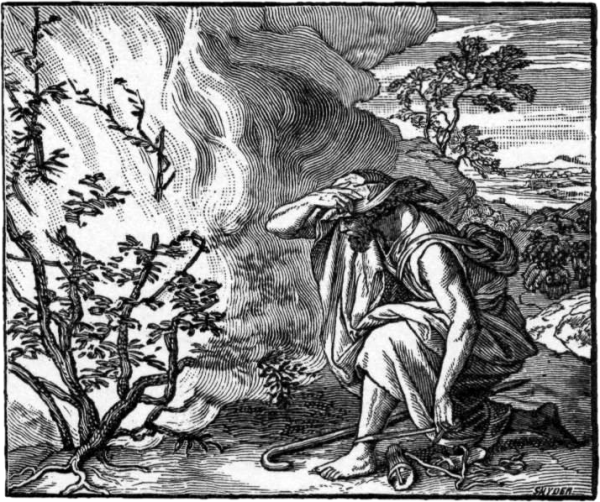
Illustration from the 1897 Bible Pictures and What They Teach Us: Containing 400 Illustrations from the Old and New Testaments: With brief descriptions by Charles Foster.
IMAGE LINKED: wikimedia Attribution 4.0 International (CC BY 4.0)
We have seen that the entered Apprentice Degree refers to the passage in Ruth, whereby the removal of a shoe symbolises a binding obligation.
In the Master Mason Degree we are completely barefoot. The reference to our naked feet is not verbal but something which differs in meaning from that in the first degree: the act of reverence for sacred or holy ground.
The Rite of Discalceation – derived from the Latin, “discalceatus,” meaning “unshod” – is something that is known and performed across the world.
The custom of removing shoes on entering a sacred building dates to extreme antiquity, it is a token of reverence and humility.
It is known as the “Rite of Discalceation” and in the language of symbolism, signifies that the place that is approached in reverence and humility is consecrated to some holy purpose.
Therefore, although the only time we are physically barefoot in lodge is during that Third Degree, we are reminded that we need always be aware that when we enter the lodge, we are symbolically walking on sacred ground.
Albert Mackey describes the rite in “The Symbolism of Freemasonry” (1882):
The rite of discalceation, or uncovering the feet on approaching holy ground, is derived from the Latin word discalceare, to pluck off one’s shoes. The usage has the prestige of antiquity and universality in its favor.
That it not only very generally prevailed, but that its symbolic signification was well understood in the days of Moses, we learn from that passage of Exodus where the angel of the Lord, at the burning bush, exclaims to the patriarch, “Draw not nigh hither; put off thy shoes from off thy feet, for the place whereon thou standest is holy ground.”
Clarke thinks it is from this command that the Eastern nations have derived the custom of performing all their acts of religious worship with bare feet.
But it is much more probable that the ceremony was in use long anterior to the circumstance of the burning bush, and that the Jewish lawgiver at once recognized it as a well-known sign of reverence.
Bishop Patrick entertains this opinion, and thinks that the custom was derived from the ancient patriarchs, and was transmitted by a general tradition to succeeding times.
Abundant evidence might be furnished from ancient authors of the existence of the custom among all nations, both Jewish and Gentile. A few of them, principally collected by Dr. Mede, must be curious and interesting.The direction of Pythagoras to his disciples was in these words: “Ανυπόδητος θύε ϗαι πρόσϗυνει;” that is, Offer sacrifice and worship with thy shoes off.
Justin Martyr says that those who came to worship in the sanctuaries and temples of the Gentiles were commanded by their priests to put off their shoes.
Drusius, in his Notes on the Book of Joshua, says that among most of the Eastern nations it was a pious duty to tread the pavement of the temple with unshod feet.
Maimonides, the great expounder of the Jewish law, asserts that “it was not lawful for a man to come into the mountain of God’s house with his shoes on his feet, or with his staff, or in his working garments, or with dust on his feet.”
Rabbi Solomon, commenting on the command in Leviticus xix. 30, “Ye shall reverence my sanctuary,” makes the same remark in relation to this custom.
On this subject Dr. Oliver observes, “Now, the act of going with naked feet was always considered a token of humility and reverence; and the priests, in the temple worship, always officiated with feet uncovered, although it was frequently injurious to their health.”
Mede quotes Zago Zaba, an Ethiopian bishop, who was ambassador from David, King of Abyssinia, to John III., of Portugal, as saying, “We are not permitted to enter the church, except barefooted.”
The Muslims, when about to perform their devotions, always leave their slippers at the door of the mosque.
The Druids practised the same custom whenever they celebrated their sacred rites; and the ancient Peruvians are said always to have left their shoes at the porch when they entered the magnificent temple consecrated to the worship of the sun.
Adam Clarke thinks that the custom of worshipping the Deity barefooted was so general among all nations of antiquity, that he assigns it as one of his thirteen proofs that the whole human race have been derived from one family.
A theory might be advanced as follows: The shoes, or sandals, were worn on ordinary occasions as a protection from the defilement of the ground.
To continue to wear them, then, in a consecrated place, would be a tacit insinuation that the ground there was equally polluted and capable of producing defilement.
But, as the very character of a holy and consecrated spot precludes the idea of any sort of defilement or impurity, the acknowledgment that such was the case was conveyed, symbolically, by divesting the feet of all that protection from pollution and uncleanness which would be necessary in unconsecrated places.
So, in modern times, we uncover the head to express the sentiment of esteem and respect.
Now, in former days, when there was more violence to be apprehended than now, the casque, or helmet, afforded an ample protection from any sudden blow of an unexpected adversary.
But we can fear no violence from one whom we esteem and respect; and, therefore, to deprive the head of its accustomed protection, is to give an evidence of our unlimited confidence in the person to whom the gesture is made.
The rite of discalceation is, therefore, a symbol of reverence. It signifies, in the language of symbolism, that the spot which is about to be approached in this humble and reverential manner is consecrated to some holy purpose.
Now, as to all that has been said, the intelligent mason will at once see its application to the third degree.
Of all the degrees of Masonry, this is by far the most important and sublime.
The solemn lessons which it teaches, the sacred scene which it represents, and the impressive ceremonies with which it is conducted, are all calculated to inspire the mind with feelings of awe and reverence.
Into the holy of holies of the temple, when the ark of the covenant had been deposited in its appropriate place, and the Shekinah was hovering over it, the high priest alone, and on one day only in the whole year, was permitted, after the most careful purification, to enter with bare feet, and to pronounce, with fearful veneration, the tetragrammaton or omnific word.
And into the Master Mason’s lodge – this holy of holies of the masonic temple, where the solemn truths of death and immortality are inculcated – the aspirant, on entering, should purify his heart from every contamination, and remember, with a due sense of their symbolic application, those words that once broke upon the astonished ears of the old patriarch;
“Put off thy shoes from off thy feet, for the place whereon thou standest is holy ground.”
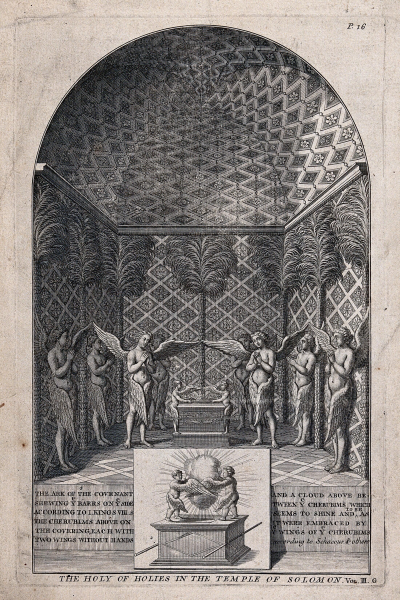
he ark of the covenant guarded by angels in the Temple of Solomon.
IMAGE LINKED: wellcome collection Attribution 4.0 International (CC BY 4.0)
Recent Articles: Masonic Miscellanies
 Masonic Miscellanies - The Amulet of the Ladder Explore the cosmic significance of the Ladder in ancient Egyptian mythology through Wallis Budge's "Egyptian Magic." Discover how this profound symbol bridges the mortal and divine, encapsulating the Egyptians' fervent afterlife aspirations with a blend of myth, magic, and material culture. Dive into the celestial ascent of Osiris and mortal souls. |
 Masonic Miscellanies - Adulterine Gilds Guilds, the associations that shaped medieval European society, were more than just organizations of artisans and merchants. They played a vital role in the economic and social development of towns and cities. This exploration delves into the intriguing concept of adulterine gilds and their interconnectedness with guilds, offering insight into the significance of legal authorization and recognition in medieval Europe. |
 Masonic Miscellanies - Masonic Orb Discover the fascinating world of Masonic ball watch fobs, intricately crafted with tiny pyramids that form a cross when opened. These decorative accessories were all the rage in the late 1800s and early 1900s, and they still hold a certain allure today. Explore the different varieties and symbols found on these unique pieces that carry deep Masonic meaning. |
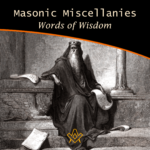 Masonic Miscellanies – Words of Wisdom Uncover timeless wisdom from King Solomon to Albert Pike in our latest Masonic Miscellanies, a treasure trove of insights for Masons. Journey through the ages and glean inspiring sayings, reflecting on their profound influence on Masonic principles. An enriching read for the enlightened. |
 Masonic Miscellanies - Symbolism of the Right Hand Unlock the enigmatic realm of Freemasonry as we delve into its age-old symbols, rituals, and philosophies. This thought-provoking exploration, drawn from Mackey's Revised Encyclopedia of Freemasonry, focuses on the iconic 'right hand' symbol - its rich history, universality, and profound significance. |
 Masonic Miscellanies - Order of the Secret Monitor Unveil the mystery of Freemasonry with 'The Order of the Secret Monitor'. Discover this lesser-known appendant order, its unique rituals, and the profound teachings it offers. Explore the bonds of friendship and brotherhood it fosters, all wrapped in an intriguing cloak of mystery. Your journey into the depths of Masonic wisdom begins here. |
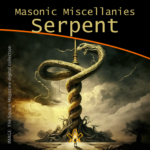 Masonic Miscellanies - The Symbol of the Serpent As a symbol, the serpent obtained a prominent place in all the ancient initiations and religions. |
 Masonic Miscellanies - The Four Veils in Royal Arch Masonry What are the four veils in Royal Arch Masonry? And what is the 'Ceremony of Passing the Veils'? Although common throughout Scotland, Ireland and the United States, it is mostly unknown in England, presently only worked in the Province of Bristol. ( and by dispensation ) |
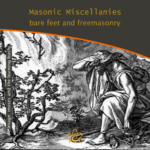 Masonic Miscellanies - Bare feet and Freemasonry A candidate for initiation into a Masonic Lodge often finds the requirements which he/she must fulfil somewhat odd. The mode of preparation often remains a puzzle, since the ritualistic explanation is not offered in full. Why are we 'slipshod' or "bare-footed" in Masonic Ritual? |
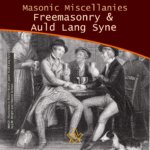 Masonic Miscellanies – Freemasonry and Auld Lang Syne Millions of people throughout the world will sing Auld Lang Syne to see out the Old Year. Few will know all the words, fewer still know what they mean, or that there is a link to Freemasonry. |
 Masonic Miscellanies - The Mosaic Pavement - why mosaic, why pavement? We are all familiar with the black and white chequered flooring of the Masonic lodge but where did it originate? There are a few theories… |
 Masonic Miscellanies – Masonic Master's Carpets Have you got a magic "Masonic Master's Carpet" in your lodge? I say 'magic' with my tongue firmly in my cheek because (as far as I know) these fabulous works of art don't bestow any mystical powers but can bestow some educational ones! However, considering their possible value today, they may magic up some interest (or funds). |
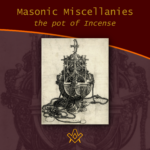 Masonic Miscellanies – The Pot of Incense Just when the pot of incense became an emblem of the third section of the Sublime Degree can not be stated with certainty. It is, apparently, an American invention or addition. But what does it symbolise? |
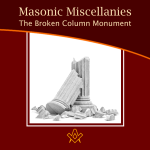 Masonic Miscellanies - The Broken Column Monument The story of the broken column was first illustrated by Amos Doolittle in the "True Masonic Chart" by Jeremy Cross, published in 1819. |
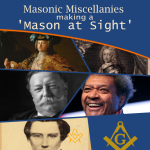 Masonic Miscellanies - Making a 'Mason at Sight' What does it mean to make a 'Mason at sight', and who was made one? |
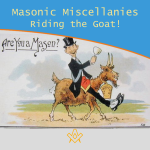 Masonic Miscellanies - Riding the Goat! Many Freemasons will have come across the phrase 'riding the goat', and will no doubt have been the butt of a joke about it (sorry, I couldn't resist!) But what does it mean and where did the phrase come from? |
 Masonic Miscellanies - What are the 'three dots'? Three dots or points in an upright triangular shape ∴ is most commonly known as the 'therefore' sign – so why is it used in Freemasonry? |
 Masonic Miscellanies - Keep Within Compass This month we discover a series of allegorical prints warning us to "Keep within Compass and you shall be sure, to avoid many troubles which others endure." |
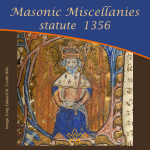 Masonic Miscellanies - statute 1356 Further to the reference in the article – The Builders - 6 - Free-Masons 'a statute was enacted against the Free-masons in 1356' – Regulations for masons who are hewers, on the one hand, and the light masons and setters on the other. |
 Masonic Miscellanies - An Anti-Masonic 'Apron'? The Anti-Masonic 'Apron' was created during the 1832 Presidential election in USA. It was not Ani-masonic. And it was not an apron. Read on to find out what and why it was created. |
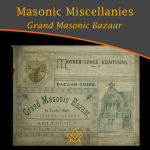 Masonic Miscellanies - Grand Masonic Bazaar (1895) Grand Masonic Bazaar (1895); to raise funds to clear the debt incurred by “Mother Kilwinning” in rebuilding their Lodge. |
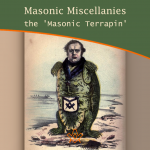 Masonic Miscellanies - the 'Masonic Terrapin' A satirical book from 1851 includes a bizarre caricature of a 'Masonic Terrapin' - all I can say is 'read on'… |
 Masonic Miscellanies - Masonic Bookplates You probably know what a bookplate is for, but did you know that the earliest known book mark/label dates from the reign of Amenhotep III in Egypt around 1391−1353 BCE?! |
 Masonic Miscellanies - Freemasonry & Bees Freemasonry & Bees - what's the buzz? The bee was among the Egyptians the symbol of an obedient people, because, says Horapollo, of all insects, the bee alone had a king. |
 Masonic Miscellanies - The mystery of the Tattooed Freemason In 1894, the body of a drowned man was found in the Bay of San Francisco - what they discovered was amazing. |
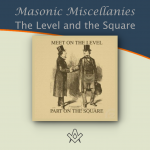 Masonic Miscellanies - The Level and the Square (A Poem) The Level and the Square (A Poem) - "We meet upon the Level, and we part upon the Square – |
 Masonic Miscellanies - The Mystic Tie What is the 'Mystic Tie'? Clue: it's not an item of neckwear! |
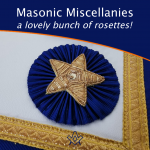 Masonic Miscellanies - A lovely bunch of rosettes! Where did the origin of the use of rosettes on Masonic aprons come from ? |
 Masonic Miscellanies - The Lodge of Sorrow The Lodge of Sorrow - Extracted General Ahiman Rezon, by Daniel Sickles, [1868] |
 Masonic Miscellanies - Memento Mori Memento Mori - a Masonic reminder to make your mark on the world |
 Masonic Miscellanies - A closer look at the Level and the Plumb-rule A closer look at the Level and the Plumb-rule |
 Masonic Miscellanies - The Symbolism of the Gloves The Symbolism of the Gloves and why Freemasons wear white gloves |
 Masonic Miscellanies - Will the real James Anderson please stand up? Will the real James Anderson please stand up? |
 Masonic Miscellanies - The Legend of the Third Degree The most important and significant of the legendary symbols of Freemasonry is, undoubtedly, that which relates to the fate of Hiram Abif. |
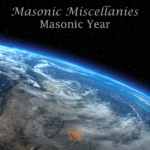 Masonic Miscellanies - Masonic Calendar Why do Freemasons use different 'years' to our regular calendar? |
 Masonic Miscellanies - What is a 'Lewis'? The English word 'Lewis' is a term belonging to operative Masonry, and signifies an iron cramp, which is inserted in a cavity prepared for the purpose in a large stone. |
 Masonic Miscellanies - From J.S.M. Ward Ever wondered why masons had to be 'free' or why we have a Tyler? |
masonic knowledge
to be a better citizen of the world
share the square with two brothers

click image to open email app on mobile device



